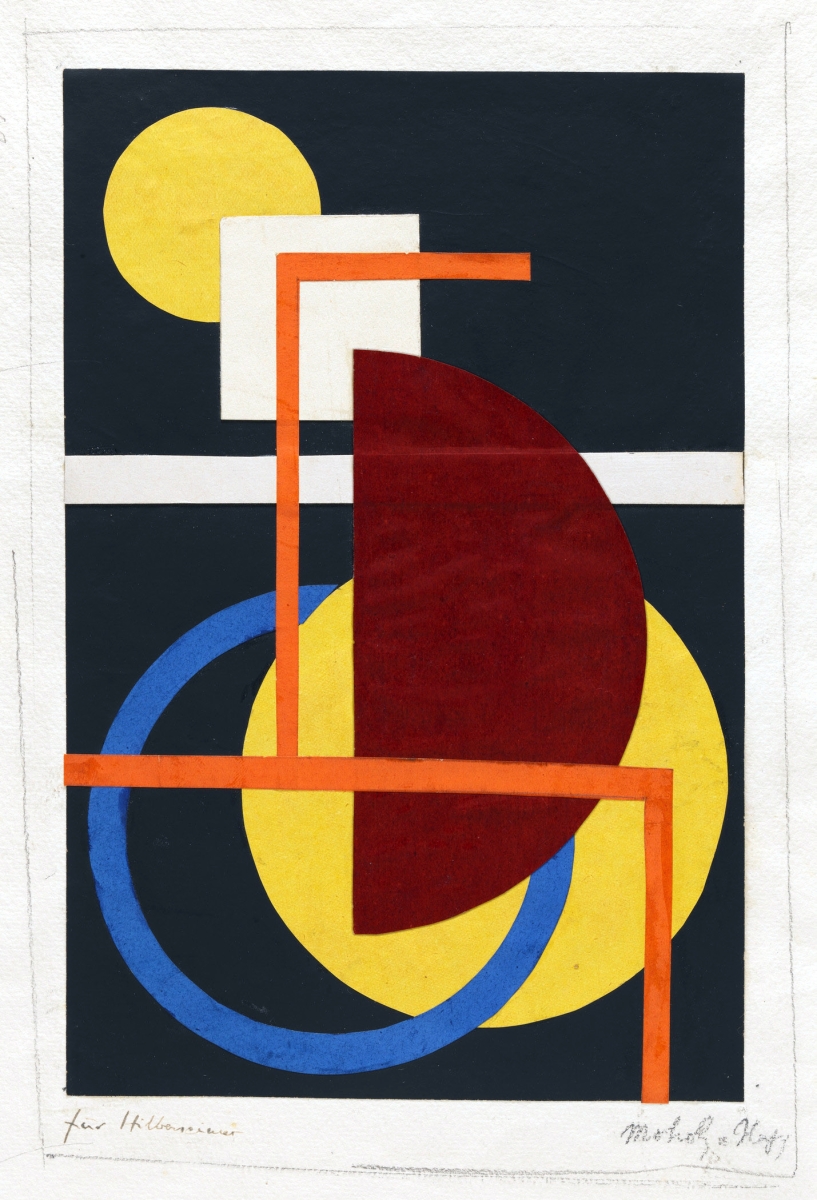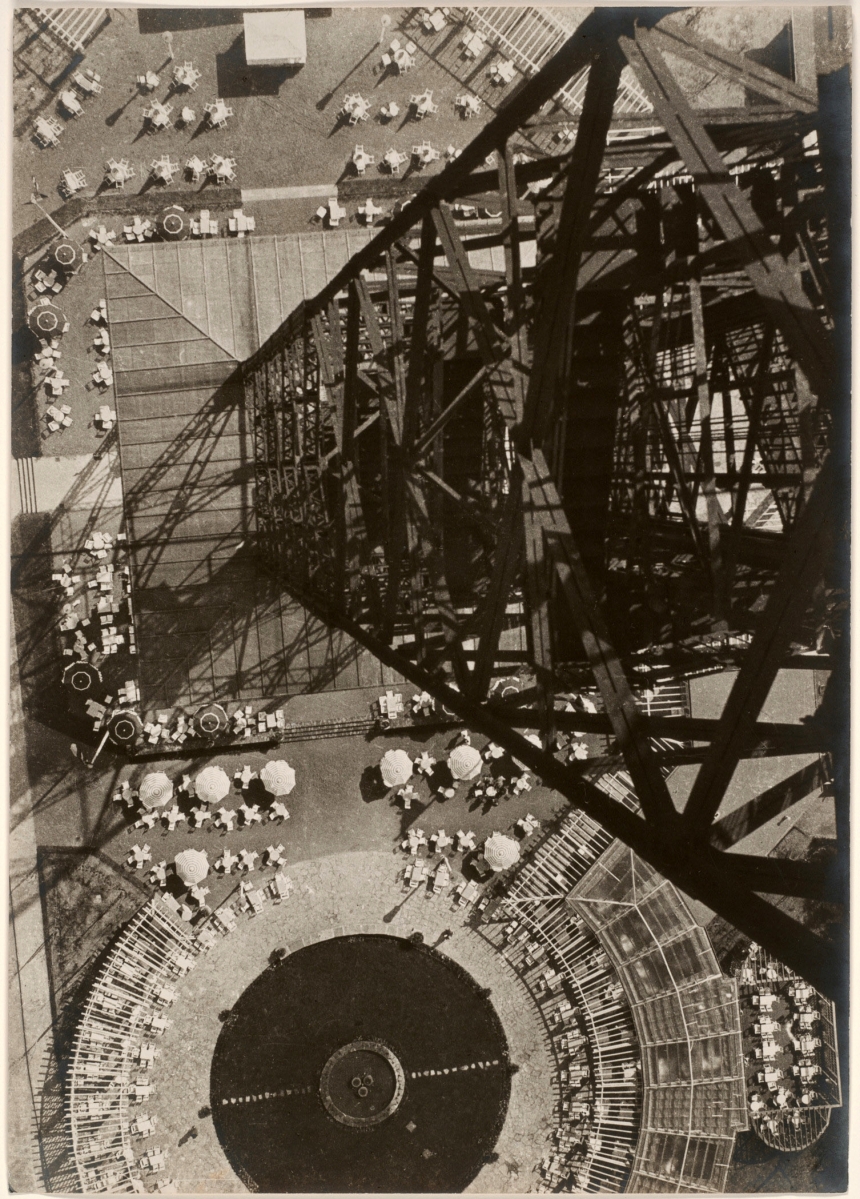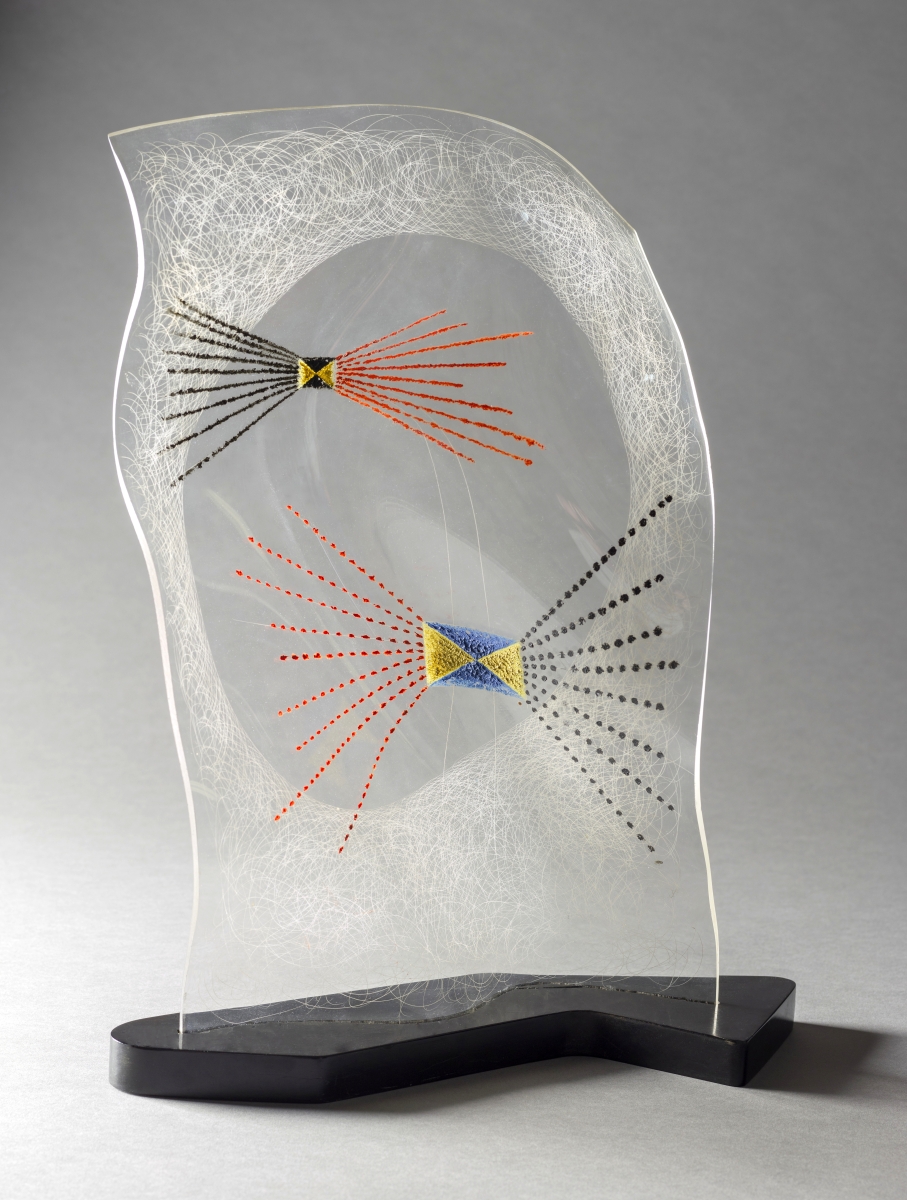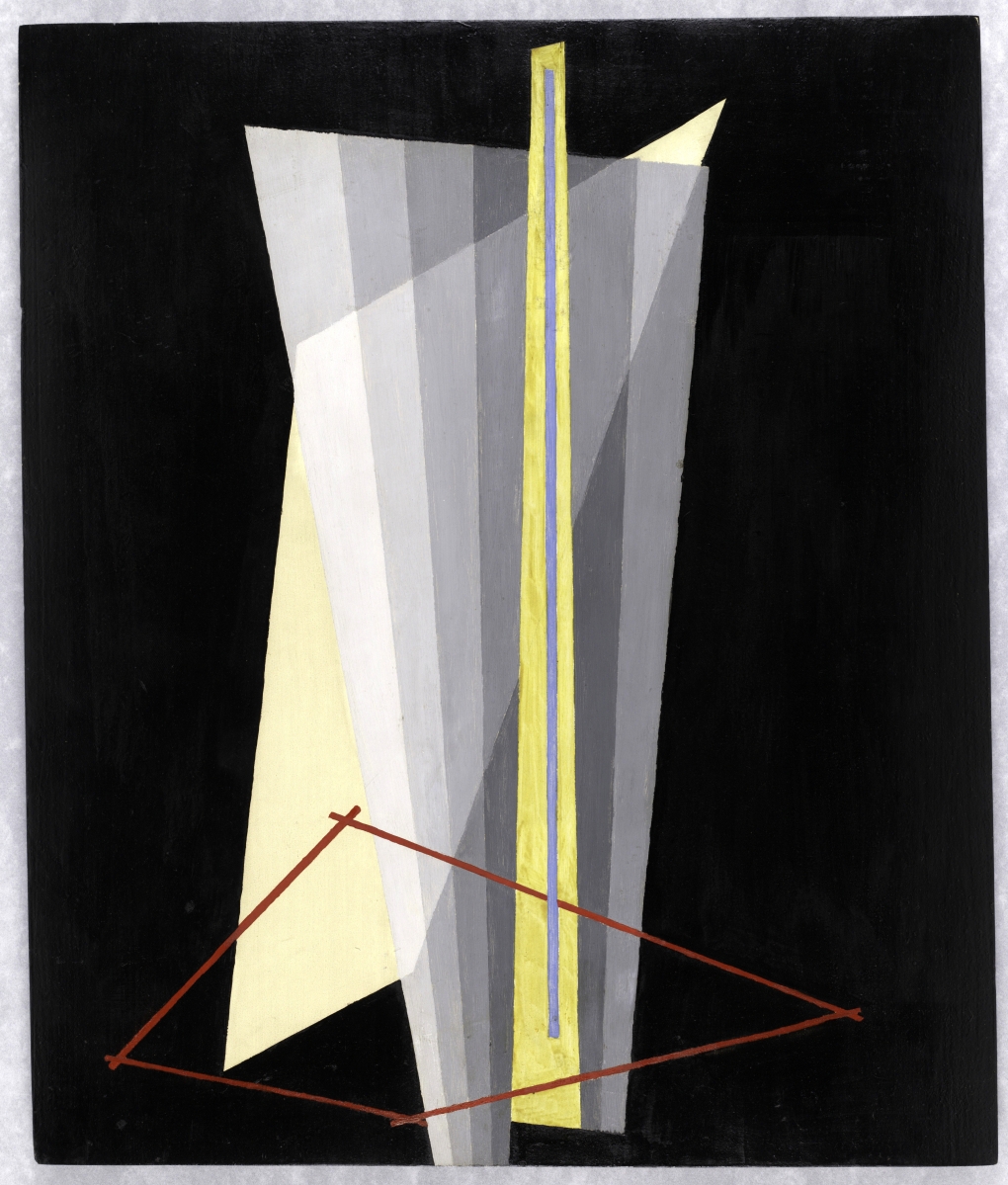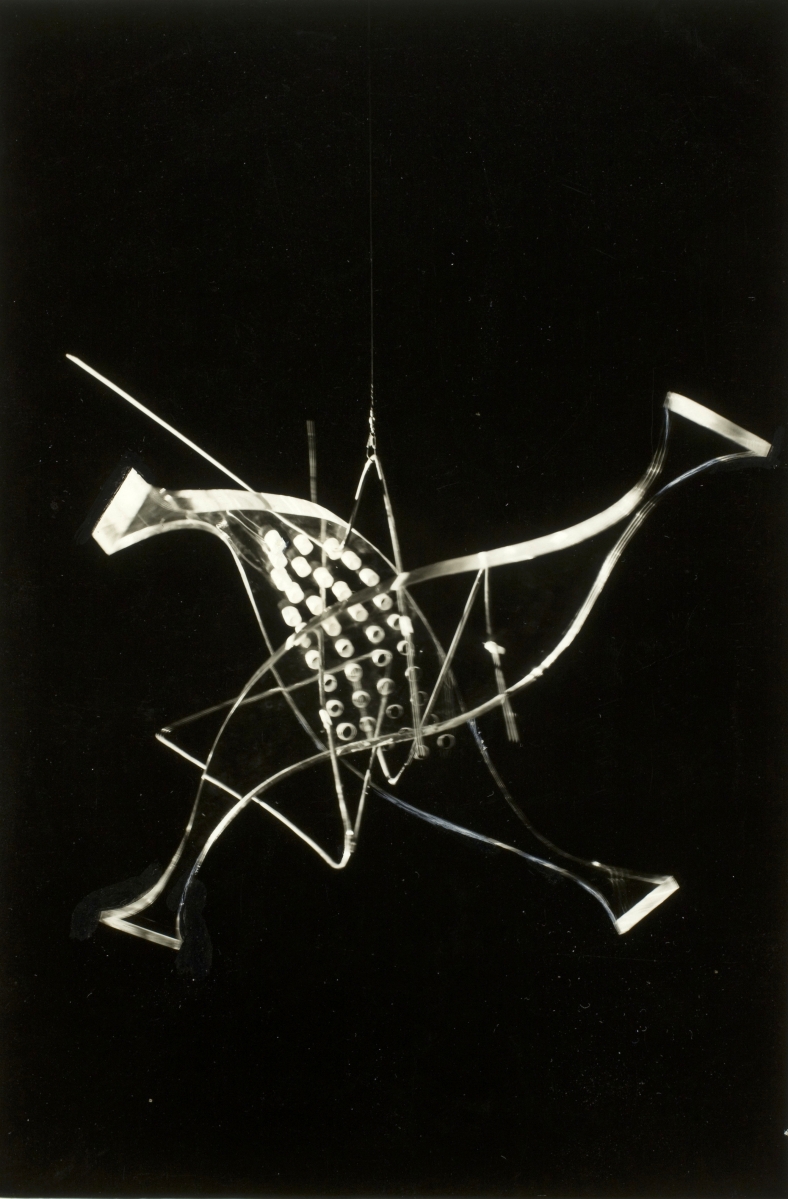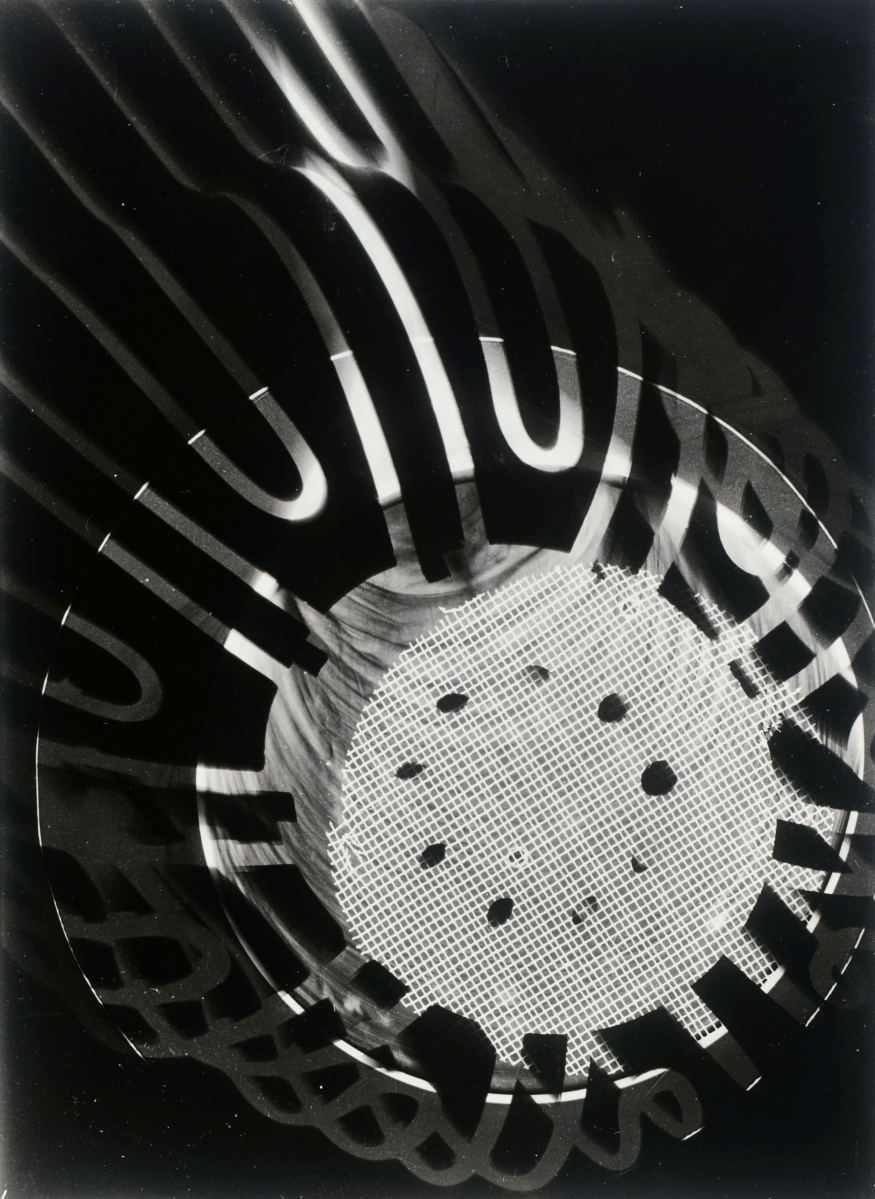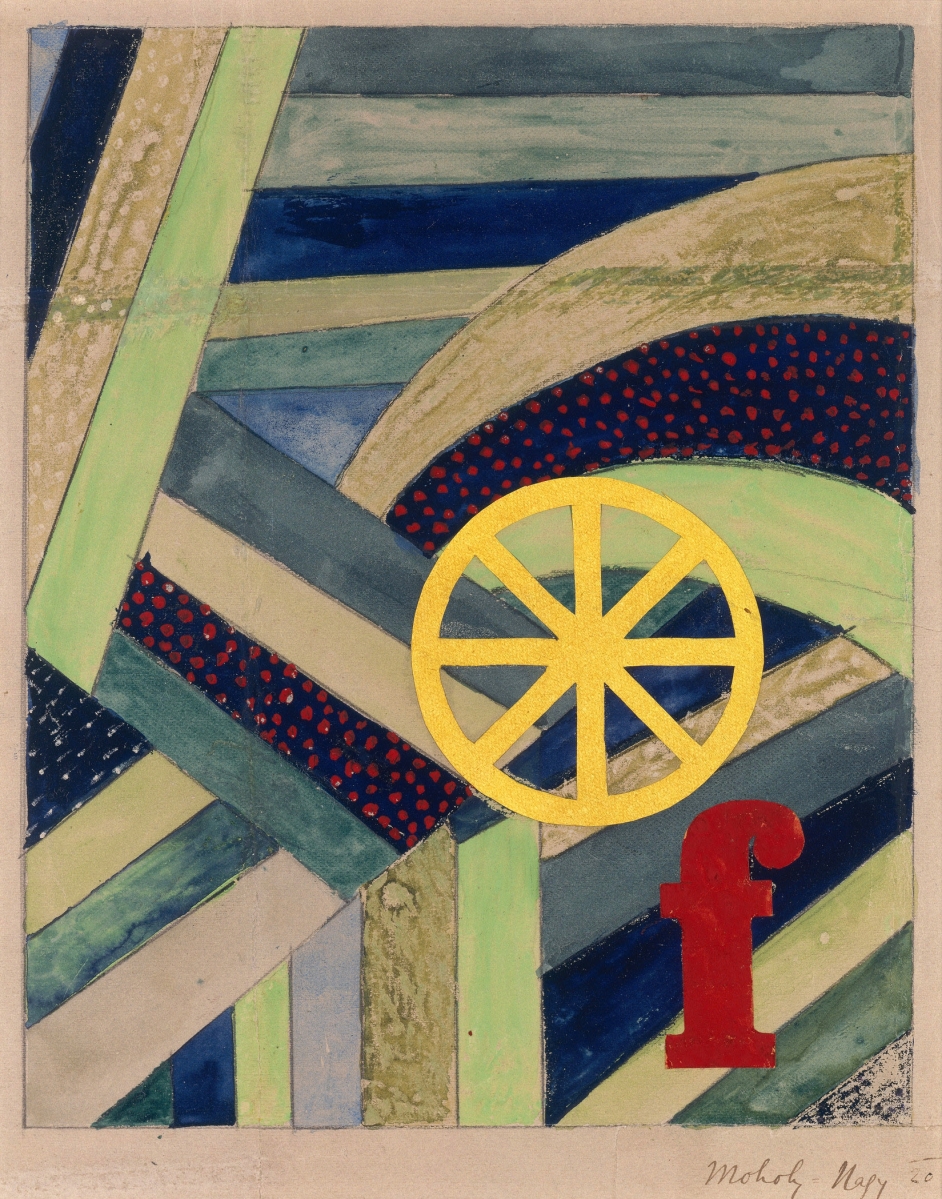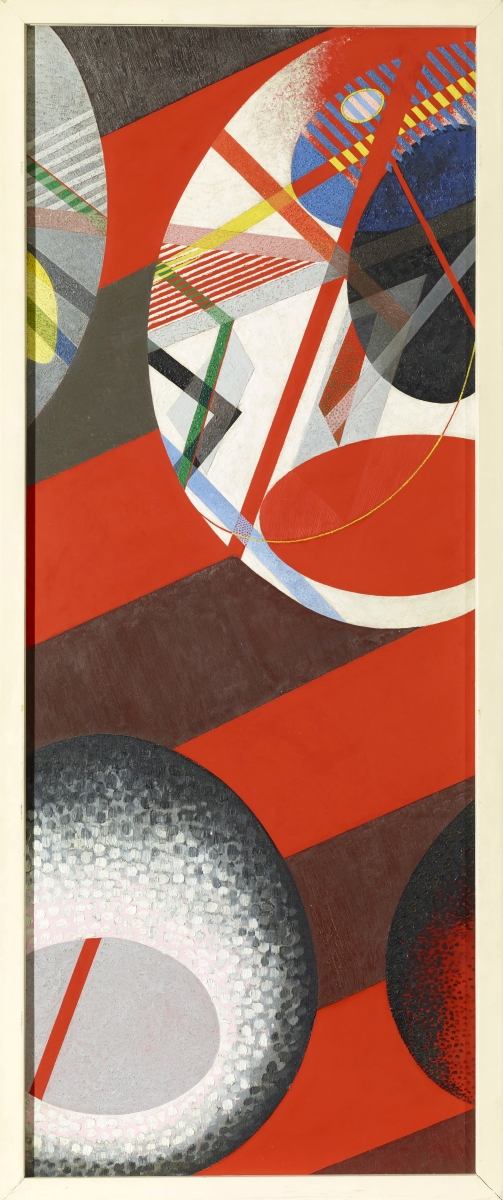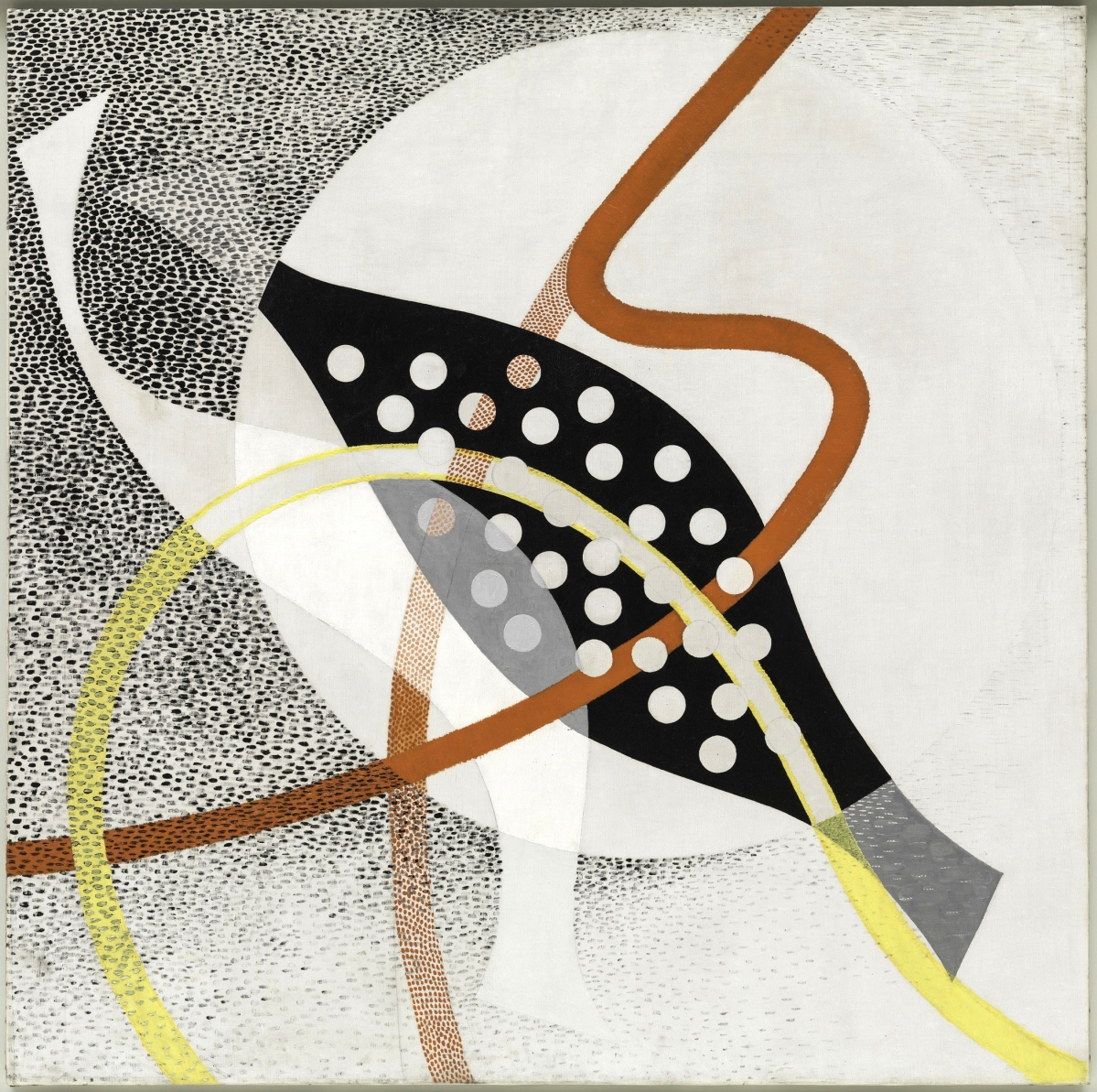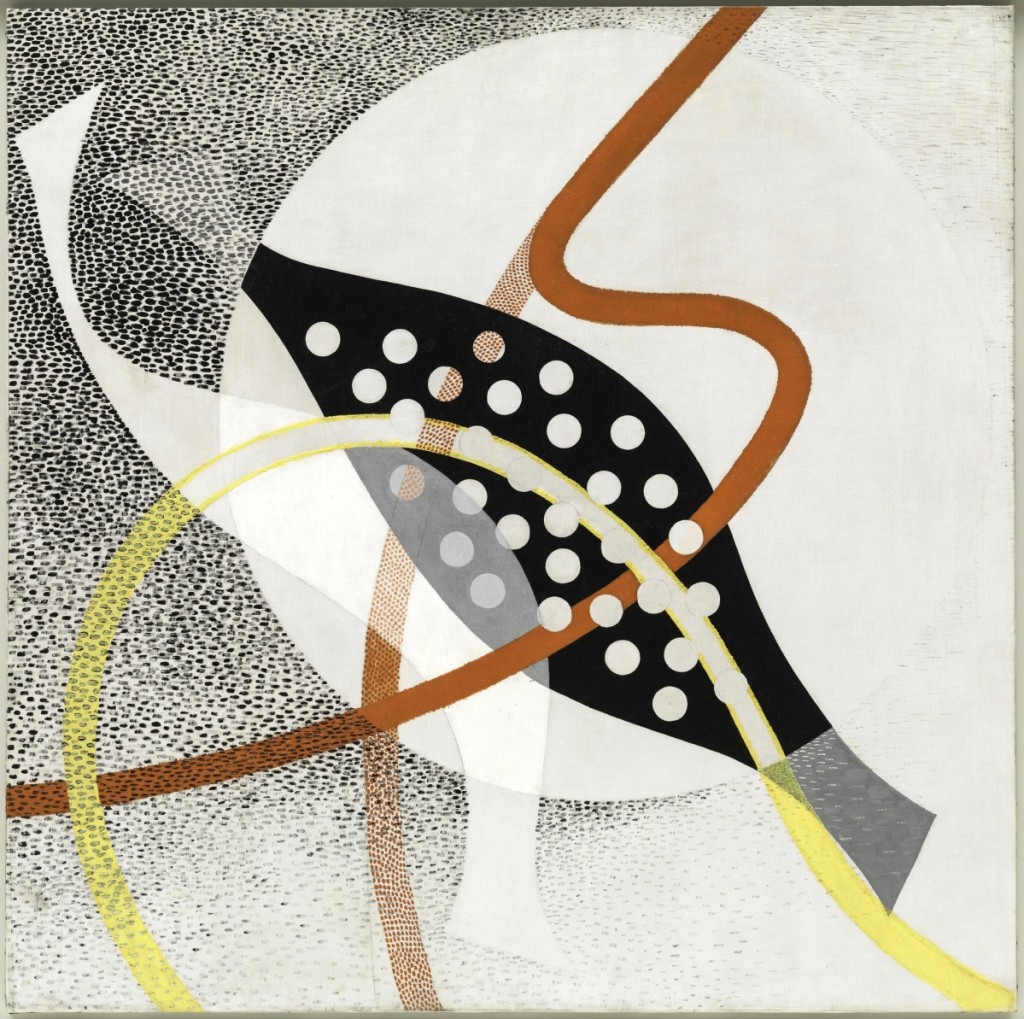
“CH BEATA I,” 1939, oil and graphite on canvas, 46- by 47- inches, Solomon R. Guggenheim Museum, New York, Solomon R. Guggenheim Founding Collection. ©2017 Hattula Moholy-Nagy/Artists Rights Society (ARS), New York/VG Bild-Kunst, Bonn, photo ©Solomon R. Guggenheim Foundation, New York, photography by Kristopher McKay.
LOS ANGELES – The Los Angeles County Museum of Art (LACMA) presents “Moholy-Nagy: Future Present,” the first comprehensive retrospective of the pioneering artist and educator Lászlo Moholy-Nagy (1895-1946) to be seen in the United States in nearly 50 years. Organized by LACMA, the Solomon R. Guggenheim Foundation, and the Art Institute of Chicago, this exhibition, on view through June 18, examines the rich and varied career of the Hungarian-born modernist.
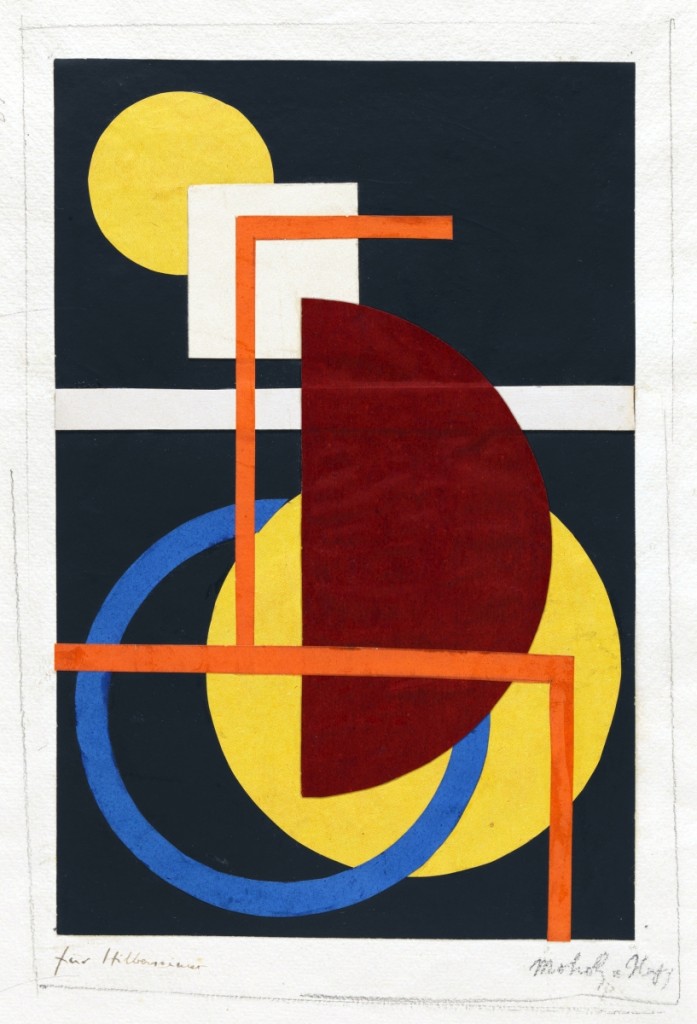
Unknown title, 1920–21, gouache, collage, and graphite on paper, 9-5/8 by 6-3/8 inches, Los Angeles County Museum of Art, Gift of Kate Steinitz. ©2017 Hattula Moholy-Nagy/Artists Rights Society (ARS), New York/VG Bild-Kunst, Bonn, photo ©Museum Associates/LACMA.
One of the most versatile figures of the Twentieth Century avant-garde, Moholy (as he is often called) believed in the potential of art as a vehicle for social transformation and in the value of new technologies in harnessing that potential. He was a pathbreaking painter, photographer, sculptor, designer and filmmaker as well as a prolific writer and an influential teacher in both Germany and the United States.
Among his innovations were experiments with cameraless photography; the use of industrial materials in painting and sculpture; research with light, transparency and movement; work at the forefront of abstraction; fluidity in moving between the fine and applied arts; and the conception of creative production as a multimedia endeavor. Radical for the time, these are now all firmly part of contemporary art practice.
The exhibition includes approximately 300 works, including paintings, sculptures, drawings, collages, photographs, photograms, photomontages, films and examples of graphic, exhibition and theater design. A highlight is the full-scale realization of the “Room of the Present,” an immersive installation that is a hybrid of exhibition space and work of art, seen here for the first time in the United States. This work – which includes photographic reproductions, films, images of architectural and theater design, and examples of industrial design – was conceived by Moholy around 1930 but realized only in 2009.
“Future Present” is co-organized by Carol S. Eliel, curator of Modern art, LACMA; Karole P.B. Vail, curator, Solomon R. Guggenheim Museum; and Matthew S. Witkovsky, Richard and Ellen Sandor chair and curator, department of photography, Art Institute of Chicago. The exhibition’s tour began at the Solomon R. Guggenheim Museum in New York, continued at the Art Institute of Chicago and concludes at LACMA.
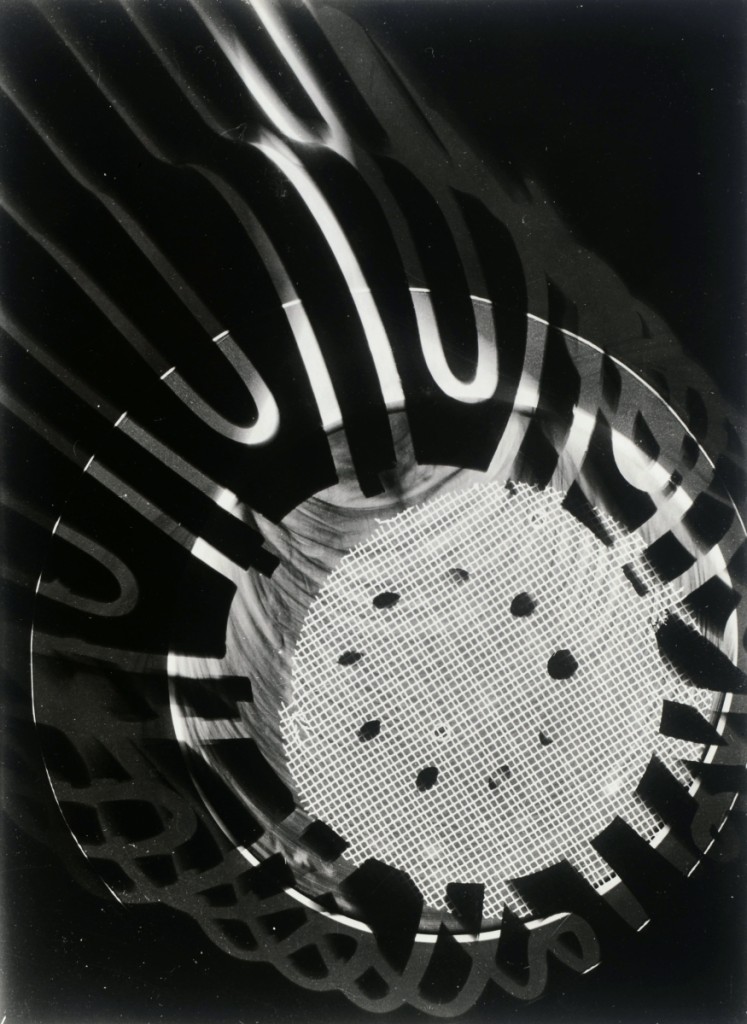
“Photogram,” 1925–28, printed 1929, gelatin silver print (enlargement from photogram) from the Giedion Portfolio, 15¾ by 11-13/16 inches, The Museum of Fine Arts, Houston, museum purchase funded by the Mary Kathryn Lynch Kurtz Charitable Lead Trust, The Manfred Heiting Collection, ©2017 Hattula Moholy-Nagy/Artists Rights Society (ARS), New York/VG Bild-Kunst, Bonn.
The LACMA exhibition is designed by the Los Angeles-based architecture firm Johnston Marklee. The installation’s design reflects the transparency and dynamism of Moholy’s work, with a diagonal visual “cut” through the entire exhibition space. At the same time, details of the installation pay specific homage to Moholy’s vocabulary both in Germany (a black line running along the floorboards and around doorways) and in Chicago (organically shaped plinths and pedestals for the later sculptures). The exhibition is accompanied by a comprehensive exhibition catalog.
“Moholy-Nagy is considered one of the earliest modern artists actively to engage with new materials and technologies. This spirit of experimentation connects to LACMA’s longstanding interest in and support of the relationship between art and technology, starting with its 1967-71 Art and Technology Program and continuing with the museum’s current Art + Technology Lab,” according to Michael Govan, LACMA chief executive officer and Wallis Annenberg director. “This exhibition’s integrated view of Moholy’s work in numerous mediums reveals his relevance to contemporary art in our multi- and new media age.”
The exhibition is installed chronologically with sections following Moholy’s career from his earliest days in Hungary through his time at the Bauhuas (1923-28), his post-Bauhaus period in Europe and ending with his final years in Chicago (1937-46).
LACMA is in Hancock Park at 5905 Wilshire Boulevard at Fairfax Avenue. For more information, www.lacma.org or 323-857-6000.

